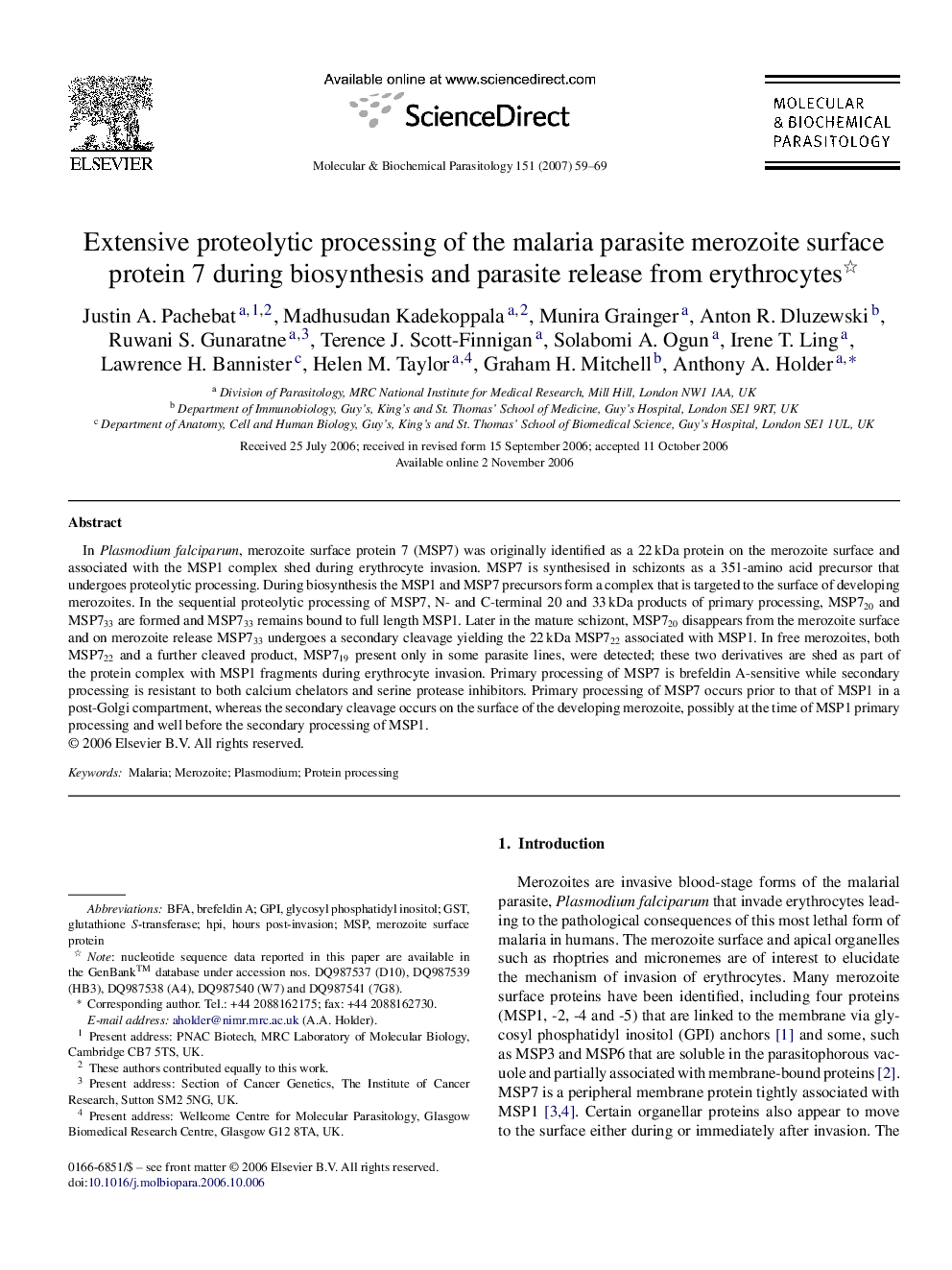| Article ID | Journal | Published Year | Pages | File Type |
|---|---|---|---|---|
| 5916211 | Molecular and Biochemical Parasitology | 2007 | 11 Pages |
Abstract
In Plasmodium falciparum, merozoite surface protein 7 (MSP7) was originally identified as a 22Â kDa protein on the merozoite surface and associated with the MSP1 complex shed during erythrocyte invasion. MSP7 is synthesised in schizonts as a 351-amino acid precursor that undergoes proteolytic processing. During biosynthesis the MSP1 and MSP7 precursors form a complex that is targeted to the surface of developing merozoites. In the sequential proteolytic processing of MSP7, N- and C-terminal 20 and 33Â kDa products of primary processing, MSP720 and MSP733 are formed and MSP733 remains bound to full length MSP1. Later in the mature schizont, MSP720 disappears from the merozoite surface and on merozoite release MSP733 undergoes a secondary cleavage yielding the 22Â kDa MSP722 associated with MSP1. In free merozoites, both MSP722 and a further cleaved product, MSP719 present only in some parasite lines, were detected; these two derivatives are shed as part of the protein complex with MSP1 fragments during erythrocyte invasion. Primary processing of MSP7 is brefeldin A-sensitive while secondary processing is resistant to both calcium chelators and serine protease inhibitors. Primary processing of MSP7 occurs prior to that of MSP1 in a post-Golgi compartment, whereas the secondary cleavage occurs on the surface of the developing merozoite, possibly at the time of MSP1 primary processing and well before the secondary processing of MSP1.
Keywords
Related Topics
Life Sciences
Biochemistry, Genetics and Molecular Biology
Molecular Biology
Authors
Justin A. Pachebat, Madhusudan Kadekoppala, Munira Grainger, Anton R. Dluzewski, Ruwani S. Gunaratne, Terence J. Scott-Finnigan, Solabomi A. Ogun, Irene T. Ling, Lawrence H. Bannister, Helen M. Taylor, Graham H. Mitchell, Anthony A. Holder,
